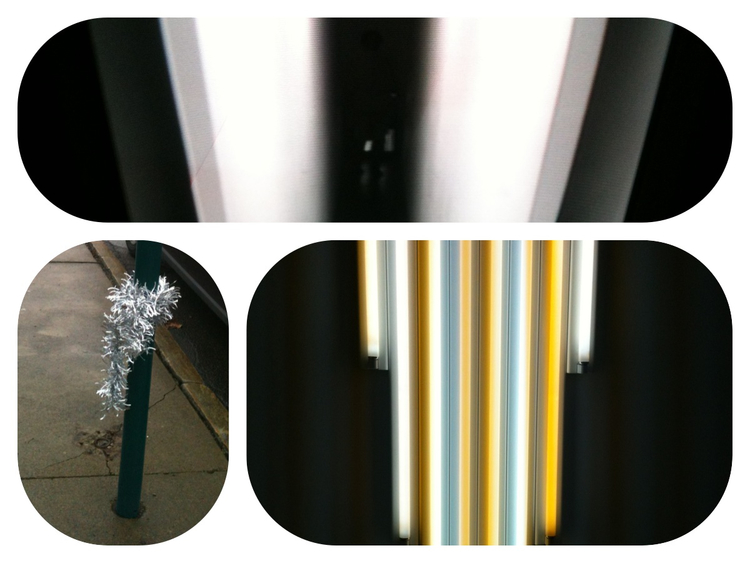As an immigrant who became a mother at a distance from her home country, I am interested in moments of rupture, or breakage in communication, in personal and national histories, in the systems that shape personal and collective identities. My oldest son and I learn each other’s language on a daily basis: he acquires new words in hebrew, even though it was his first language, and I sometimes engage with him in English, the language that has defined my scholarly and curatorial pursuits during the last decade. I am curious about the possibility of entering different cultures and attempting to feel at home, and the conflicts that might follow. I am inspired by change and its complexities, and am intrigued by transitions and shifts of people, objects and cultures within the context of the exhibition space. My work considers the tensions arising by the need to adapt to new surroundings and modes of communication, and the relationships with physical and conceptual lands of origins, which seek to shape our subjectivity.
I explored these issues in a number of exhibitions and projects organized in New York, Los Angeles and Jerusalem. In 2016, the international group exhibition I conceived and curated, Dead Lands: Karkaot Mawat, was named winner of the NurtureArt Curatorial Open Call, and was supported by Artis. The exhibition included works by emerging artists who grapple with the lands that have defined or excluded their identity, among them Assaf Evron, Dor Guez, Josh T. Franco, Metehan Ozcan, Alona Rodeh and Yaron Lapid. As the Chief Curator and Senior Director of Arts and Culture of the American Jewish University, where I also served as the Director of the Institute for Jewish Creativity and the Assistant Dean of the Whizin Center for Continuing Education between 2016-2019, I curate exhibitions by Jewish and Israeli artists, offering critical perspectives of collective narratives, and personal reckoning with personal and national identities. The Distance Between the Grooves in My Fingerprint by Christy Roberts Berkowitz (2018), in which the artist considered the body as an embodied archive of inherited violence, by exploring her family history - her mother’s family of Russian refugees, and her father’s ancestral relations to the Mayflower; the dual exhibition This is Not Halfway by Israeli L.A. based artists Gal Amiram and Shasha Dothan (2017), in which they examined the impact of their new home on their creative perspective; and Broken Cisterns by Eliyahu Fatal (Eli Petel), one of Israel’s leading artists (2018, co-curated with Leah Abir). This was his first solo exhibition in nine years, and the first in The US, and the first time he had shown work under his original family name, Fatal, which was changed to Petel by Israeli authorities following their immigration. Considering his Mizrahi roots and connection to Jewish tradition, Fatal (Petel) reflected the transportation of objects and bodies and the identity formations and cultural shifts that result.
I am also interested in the possibility of disrupting the cannon of modern art, by introducing stories and narratives of and by artists that were disregarded or marginalized by Western perceptions. This involves introducing creative pursuits by Israeli artists to American audiences, and re-contextualizing their work by thinking about shared influences, motivations and creative preoccupations. This interest was at the core of the exhibition Launch Sites L.A.: Ezra Orion Revisited, co-curated with Udi Edelman (Center for Digital Art, Israel) and supported by Artis. Orion, who passed away in 2015, was considered an influential yet forgotten sculptor, whose monumental work can be found across Israel’s public spaces. In this exhibition, we regarded his work in relation to Land Art, and examined his collaborations with NASA, his sculptural journeys to Katmandu, and the origins of Orion’s unique view of the world as tectonic sculpture. The space also included a VR station, allowing visitors to experience his grandiose global installations. At AJU’s Brandeis-Bardin campus (Simi Valley), local artist Dan Levenson created a site-specific installation inspired by Orion’s viewpoint at House of the Book, an iconic brutalist venue.
Art is essential, is communication, is expression of our understanding of the world and our position in it. It is created from the raw materials of our shared existence. The creative act allows to reflect one another, discuss painful realities, reveal undisclosed narratives, and find what lies in the in-between of our collective engagement. Mentoring artists, working with them to find their voice and reverberate it within the work, I hope to create expansive spaces for public engagement and discussion. In collaboration with Independent Curators International (ICI) I served as a curator-mentor for the Liverpool Biennial for three years, and for the Visiting Curators Series in New Mexico. In these programs, I was fortunate to be invited to mentor artists, expose their work to different audiences, and think with them about their potential targets and goals. In the framework of the Institute for Jewish Creativity, I spearhead annual programs designed to support Jewish artists based in L.A. and create a network of collaborators. There is always much more work to be done.

